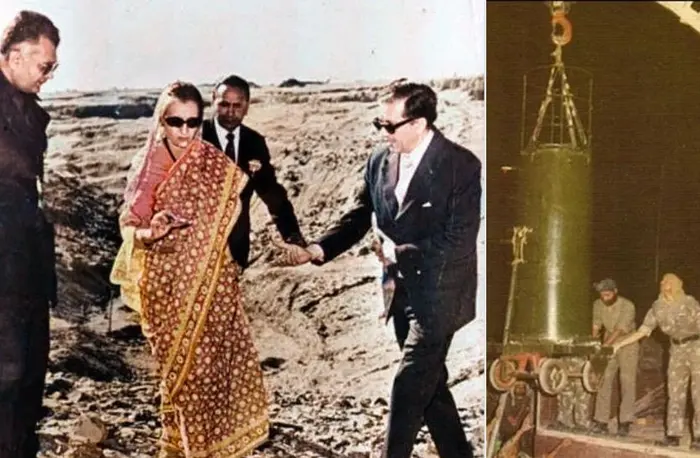Kavya Wadhwa
Nuclear and High Energy Physics
PM Gandhi, US President Eisenhower, and the Indian Nuclear Program!

As the world witnesses the growing embrace of the India-US relationship and their strategic partnership, particularly evident during the G20 meetings and the recent discussions between Prime Minister Modi and President Biden, it is worth reflecting on a significant incident from the past. This incident highlights the United States’ favourable disposition towards India’s scientific development and how Prime Minister Gandhi skillfully utilised this inclination to tip the scales in favour of India’s nuclear programme.
President Dwight D. Eisenhower’s controversial endorsement of peaceful nuclear explosions (PNEs) during his tenure as president undoubtedly had a significant impact on India’s nuclear programme, ultimately paving the way for the country’s successful development of a nuclear bomb. In 1953, President Eisenhower unveiled his groundbreaking “Atoms for Peace” initiative, a visionary plan that sought to champion the peaceful utilisation of atomic energy while simultaneously curbing the dangerous spread of nuclear weapons. This bold and forward-thinking strategy represented a significant departure from the prevailing Cold War mindset, as it sought to harness the immense power of atomic energy for the betterment of humanity rather than its destruction. By emphasising the potential benefits of nuclear technology for peaceful purposes, Eisenhower aimed to foster international cooperation and mitigate the risks associated with the burgeoning nuclear arms race. This historic initiative marked a pivotal moment in global politics, as it laid the foundation for a new era of nuclear diplomacy and set the stage for future efforts to promote disarmament and nonproliferation. Eisenhower’s “Atoms for Peace” initiative stands as a testament to his leadership and his unwavering commitment to securing a safer and more prosperous world for all.
In a bold move, the United States took the initiative to extend its nuclear technology and assistance to various nations, with the noble intention of promoting peaceful endeavours. This included the provision of Peaceful Nuclear Explosions (PNEs) for infrastructure projects, such as the construction of canals. India, as a recipient of this aid, initially wholeheartedly embraced the idea of peaceful nuclear explosions for the purpose of economic development.
India’s leadership, led by Jawaharlal Nehru and later his daughter, Indira Gandhi, gradually became increasingly dissatisfied with the constraints imposed by the Nuclear Non-Proliferation Treaty (NPT). The perception of many is that it serves as a strategic instrument employed by nuclear-possessing nations to hinder non-nuclear states from obtaining nuclear armaments. India’s strategic considerations, driven by regional security concerns, have compelled the nation to adopt a nuclear programme with a strong military focus.
The historic 1974 Pokhran-I nuclear test, known by its codename “Smiling Buddha,” symbolised a significant milestone for India as it joined the league of nuclear-armed nations. It is worth noting that while Eisenhower’s PNE programme cannot be directly attributed to India’s nuclear ambitions, the country’s acquisition of peaceful nuclear cooperation, coupled with its growing security concerns, undeniably played a role in fueling its nuclear aspirations.
The “Atoms for Peace” initiative, spearheaded by President Eisenhower, was intended to promote the peaceful utilisation of nuclear technology in India. However, as geopolitical dynamics shifted and security concerns took precedence, India’s trajectory veered towards the development of nuclear weapons. This path reached its pinnacle in 1974 with a successful nuclear test.
